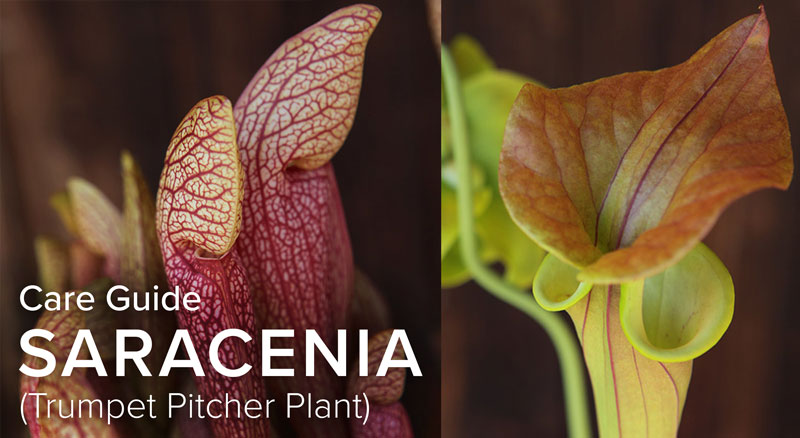
Sarracenias are one of the easiest carnivorous plants to grow. They like full sun in the summer and cold in the winter. It should be cold enough for them to stop growing – anything from an unheated conservatory to an unheated greenhouse or outside. Frost is not a problem for the majority.
The full sun means that as long as they are in the water, they can withstand quite hot temperatures. A south-facing window, conservatory, or bog garden are ideal (remember, most carnivorous plants like acid conditions and impoverished soil -unlike almost any other plant)
Watering
Always use soft water, preferably rainwater. We keep ours standing in 2-4cm water from March through October and keep them damp through the winter. They stand in water -not over a gravel tray. If you grow them in a container with no holes, keep the soil wet. If outside, it may flood and freeze in the winter, but that should be ok.
Feeding
Never give any fertiliser through the root system. If the plant is grown in fly-free conditions, it is best to feed live insects into the trap during the growing season. You can obtain Live wax worms and meal worms from http://www.globallivefood.com. Trumpet Pitchers often get indigestion in the summer when they quickly catch many insects. Indigestion causes a brown patch, which is a good sign of a healthy plant. However, it is difficult to avoid without blocking up the entrance to the trap with cotton wool.
Winter Care
Many species and hybrids are ok outside, especially in a sheltered position; this will help prevent botrytis. Otherwise, a cold greenhouse or unheated conservatory would be ideal. In winter, they will gradually die back. We cut the traps as they go brown, just cutting off slightly more than the brown part rather than the whole trap. Do this 2-3 times over the winter. As they are not growing, keep just damp rather than too wet. All will tolerate frost, but we try to keep Sarracenia psittacina frost-free to prevent it from having a deep dormancy. Some species produce flat winter leaves (phyllodia). Some plants will keep their traps over winter.
Compost
We use a mixture of 6:2:1 Sphagnum peat: perlite: sharp lime-free sand—parts by volume. Re-pot every two years to achieve maximum growth, but will tolerate being left for four years. Old compost, ericaceous compost or houseplant compost will not do. Most composts contain lime, which they hate. Also, they dislike fertiliser because their roots are designed to take in fertiliser, and the nitrogen can burn the roots.
Propagation
Grow from seed (it takes 5-7 years for a mature plant, but it is not difficult). Stratification (place pot in the fridge for a few weeks) helps germination. The seed will be pretty apparent in the round seed pod. Harvest when it has gone straw coloured and is just beginning to split (seed is brown when ripe). Either sow immediately or dry and keep in the fridge over winter. A quicker way is rhizome division or rhizome cuttings. Divide the plant just before it comes into growth in early spring. It should split quite easily if it has naturally divided.
